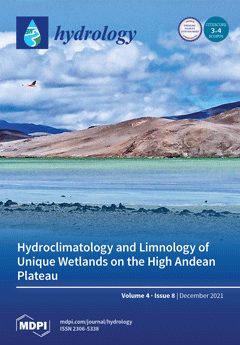Accurate rainfall estimates are important in many hydrologic activities. Rainfall data are retrieved from rain gauges (RGs), satellites, radars, and re-analysis products. The accuracy of gauge-based gridded precipitation products (GbGPPs) relies on the distribution of RGs and the quality of rainfall data records
[...] Read more.
Accurate rainfall estimates are important in many hydrologic activities. Rainfall data are retrieved from rain gauges (RGs), satellites, radars, and re-analysis products. The accuracy of gauge-based gridded precipitation products (GbGPPs) relies on the distribution of RGs and the quality of rainfall data records obtained from these. The accuracy of satellite-based precipitation products (SbPPs) depends on many factors, including basin climatology, basin topography, precipitation mechanism, etc. The hydrologic utility of different precipitation products was examined in many developed regions; however, less focused on the developing world. The Huai Bang Sai (HBS) watershed in north-eastern Thailand is a less focused but an important catchment that significantly contributes to the water resources in Thailand. Therefore, this research presents the investigation results of the hydrologic utility of SbPPs and GbGPPs in the HBS watershed. The efficiency of nine SbPPs (including 3B42, 3B42-RT, PERSIANN, PERSIANN-CCS, PERSIANN-CDR, CHIRPS, CMORPH, IMERG, and MSWEP) and three GbGPPs (including APHRODITE_V1801, APHRODITE_V1901, and GPCC) was examined by simulating streamflow of the HBS watershed through the Soil & Water Assessment Tool (SWAT), hydrologic model. Subsequently, the streamflow simulation capacity of the hydrological model for different precipitation products was compared against observed streamflow records by using the same set of calibrated parameters used for an RG simulated scenario. The 3B42 product outperformed other SbPPS with a higher Nash–Sutcliffe Efficiency (
), while APHRODITE_V1901 (
) performed fairly well in the GbGPPs category with closer agreements with observed streamflow. In addition, the CMORPH precipitation product has not performed well in capturing observed rainfall and subsequently in simulating streamflow (
) of the HBS. Furthermore, MSWEP and CHIRPS products have performed fairly well during calibration; however, they showcased a lowered performance for validation. Therefore, the results suggest that accurate precipitation data is the major governing factor in streamflow modeling performances. The research outcomes would capture the interest of all stakeholders, including farmers, meteorologists, agriculturists, river basin managers, and hydrologists for potential applications in the tropical humid regions of the world. Moreover, 3B42 and APHRODITE_V1901 precipitation products show promising prospects for the tropical humid regions of the world for hydrologic modeling and climatological studies.
Full article





